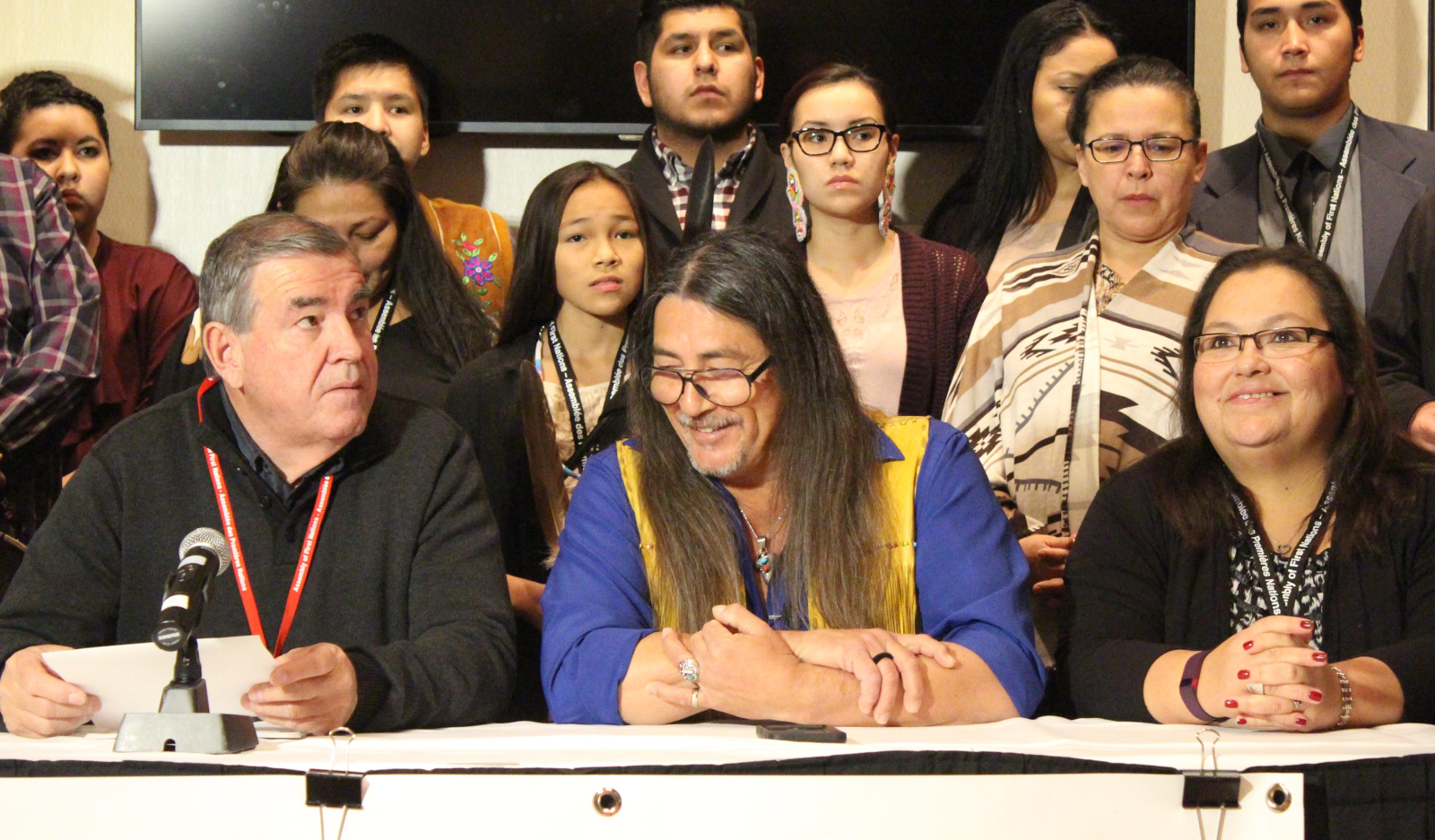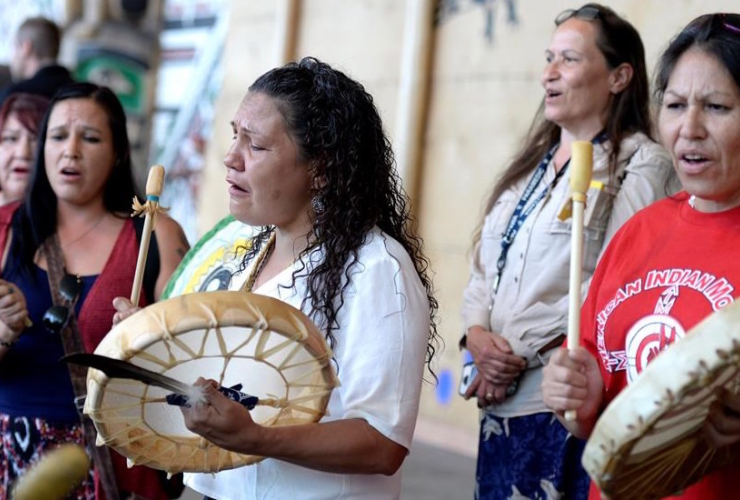Sandra Diabo is a 60-year-old Mohawk grandmother and traditional medicine keeper. She has resided in Kitigan Zibi Anishinabeg community, known as KZ, for 45 years.
The community is in Western Quebec, less than two hours away from Parliament Hill and Canada's capital region. And yet, when it comes to basic human rights such as access to clean drinking water, she says “it feels like a struggle every day of existence.” Even worse, she fears that those federal politicians who work down the highway don't seem to be listening.
The right to water has long been acknowledged as an essential human right by the United Nations. Yet, Chief Jean-Guy Whiteduck of Kitigan Zibi says that 40 per cent of his community (approximately 350 homes) lives without safe drinking water.
“What they found when testing the water [in the 1990s] was that some of the wells had high uranium content. You’re not to use that water to drink,” he told me. “Most people are using bottled water to cook and to drink. They don’t feel secure because you take the water, it looks clean, but it’s got uranium above the norms.”
According to a report from KZ and the Radiation Safety Institute of Canada, naturally occurring uranium and radium were first uncovered in KZ groundwater in the early 1990s. It took until 1999 for Health Canada to officially declare the water unsafe for consumption.

Bottled water shipped in
Today, nearly two decades on, bottled water is still shipped into some parts of the community – here in a country envied on the world stage for our wealth when it comes to natural water resources.
Just last month, KZ resident Jay Odjick tweeted that radiation can't be boiled away so residents wash in the water but do not drink it.
Kitigan Zibi resident Claudette Commanda still refuses to drink her community’s tap water.
“I do not trust the water myself,” she told me. “To me, there’s a problem. To me uranium is uranium. If my grandchildren are with me I do not bathe them in that water.”
A new report from Council of Canadians and David Suzuki Foundation paints a grim picture of First Nation on-reserve access to water. It suggested as many as one in four First Nations citizens across the country may be without clean water. Health Canada has also confirmed 127 First Nation reserves in the country lack access to a reliable source of drinking water.
There are three kinds of water advisories according to the Government of Canada: boil water, do not consume, and do not use.
These advisories or “orders” may be applied to a water system for different lengths of time and for different purposes – like chemical pollution, low chlorine levels or disease-causing bacteria like E. coli, found in the water of Walkerton, Ont. in May 2000.
During the 2015 election campaign, Justin Trudeau promised that if elected, his government would “end all boil water advisories on First Nations within five years” of taking office. He said nothing about “do not consume” or “do not use” advisories, which also affect many First Nations – like Kitigan Zibi.
Indigenous and Northern Affairs issued a statement in September 2016 stating that the federal government is steadfast in its commitment “to achieve safe, clean, reliable drinking water in all Indigenous communities.” Not just those with boil water advisories.
Advisories lifted but new ones developed
The 2017 budget claimed the government has lifted 18 long-term drinking water advisories in First Nations communities in 2016 and that they are on track to eliminate all by March 2021.
But CBC has debunked this alleged accomplishment by pointing out that though 18 advisories were indeed lifted, 12 new advisories have developed.
A solution proposed by the Assembly of First Nations is to move toward long-term, predictable and sustainable funding models for First Nation water and sanitation systems, driven directly by First Nations themselves at the community level.
That means with full consent and engagement - as opposed to superficial, paternalistic approaches that some Indigenous peoples have suggested the Trudeau Liberals are guilty of.
Chief Whiteduck says it’s going to take “a joint effort between government and First Nations” to fix this. He also told me that “there’s no reason in this day and age with our technology and knowledge we can’t all have the same water.”
Surely if we can afford half a billion dollars for Canada’s 150th we can afford to bring safe tap water to a few hundred First Nation homes 1.5 hours outside our Nation’s Capital.
Jenn Jefferys has worked in strategic communications at the Native Women’s Association of Canada, the Assembly of First Nations and on Parliament Hill during the 2015 Federal election. She has written for VICE and Chatelaine and provides political/public affairs commentary on AM640 and Sirius XM Canada Talks.






Comments